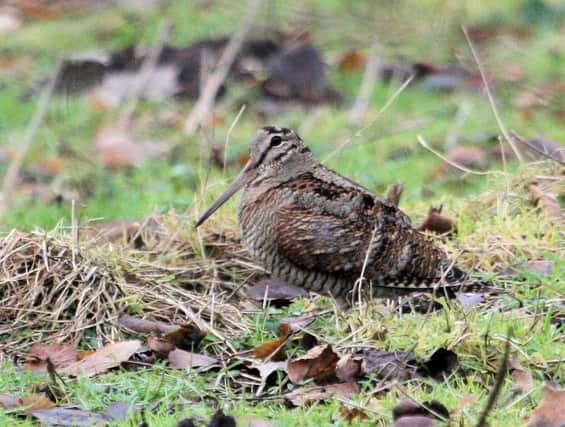Birdwatch: Odd species performs dark sky ritual in the woods


First indications are clicking sounds or soft pig-like grunting from overhead, then the woodcock, long billed, plump and barrel chested as it is silhouetted against the dark sky comes into view.
It has a fluttering shallow-winged flight, rather bat-like but in a straight line with no swooping around. Each male performs up to a dozen circuits around a chosen piece of woodland at dusk and dawn.
Advertisement
Hide AdAdvertisement
Hide AdWoodcocks are an oddity in the bird world, being the only species of wader in the British Isles that is adapted to live in woodland. Its plumage a mottling of browns, russets and buffs make it all but invisible on the woodland floors, where it roosts and nests.
This shy and secretive nature and nocturnal lifestyle makes the woodcock a tricky bird to survey and one of the few reliable ways of estimating numbers is by the number of roding males in specific areas of woodland. It is possible to tell individual males apart by their different vocal patterns.
This spring, local birders have joined in a national survey run jointly by the British Trust for Ornithology and Game and Wildlife Conservation Trust following an earlier one in 2013.
This estimated a national population of 55,241 roding males, an alarming decline of 29 per cent in numbers from the last survey in 2003, so much so that the BTO and GWCT decided that another survey this year was crucial.
Advertisement
Hide AdAdvertisement
Hide AdThe woodcock is already amber listed as a species of conservation concern because of declines both in Europe and in Russia from where there is an annual influx in early November of anything up to 750,000 individuals.
Some of these arrivals have been fitted with satellite transmitters which have revealed some of the amazing distances they cover between here and their breeding grounds. Three woodcocks tagged in winter in this country have been found the following spring some 4,400 miles away in central Siberia.
The little bittern has continued to be seen at the Old Moor reserve near Barnsley and there was also a reported sighting at Swillington Ings on Saturday morning.
The female Montagu’s harrier has continued to be seen at Blacktoft Sands. Among other sightings there have been six spotted redshanks in smart black summer plumage.
Advertisement
Hide AdAdvertisement
Hide AdSinging quails were reported at Strines Moor near Sheffield, Sherburn Ings near Scarborough, and Grimston.
An adult long-tailed skua was seen at Angler’s Country Park near Wakefield, while a pomarine skua was at Sunk Island on the Humber, three little gulls at Paull Holme Strays, a little tern at Southfield reservoir near Doncaster and black terns at Pugney’s and Angler’s country parks.
A drake surf scoter was seen with a raft of common scoters off Redcar Stray and two roseate terns, Manx shearwaters and Arctic and great skuas were among sightings at Flamborough.